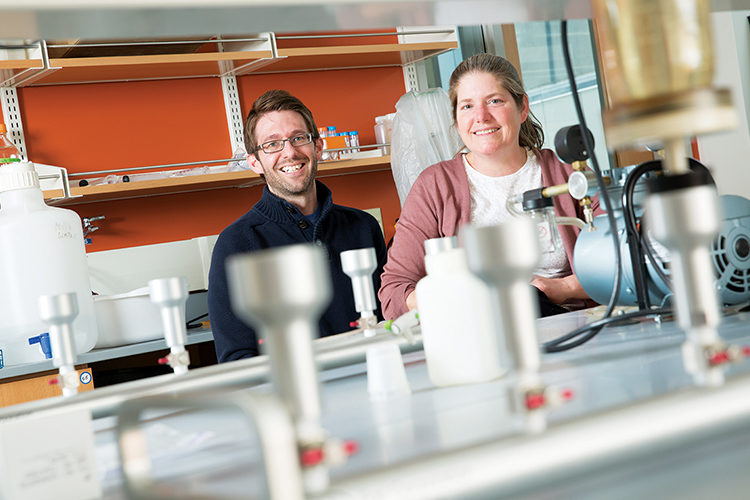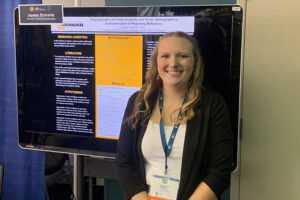Two researchers at the UWM School of Freshwater Sciences are undertaking an unusual way of monitoring the incidence of COVID-19 in a community – by analyzing its sewage.
The concentration of the virus that appears in a community’s sewage entering the wastewater treatment plant can give scientists a broad picture of the extent of the illness in that particular population, said Professor Sandra McLellan – even in cases before infected people show symptoms.
The virus that causes COVID-19 passes through the body and ends up in sewage. McLellan and Assistant Professor Ryan Newton hope to establish near real-time sampling of wastewater in order to watch for spikes or dips in the amount of the virus they find.
“It can’t tell us how many people in the community are sick (with COVID-19), but surveillance can show us trends,” said McLellan. “We can say whether the outbreak is getting better or worse.”
The two researchers are organizing a regional effort to partner with sewerage districts in Milwaukee, Racine and Green Bay for this purpose, and hope to have the effort extend statewide.
Early warning of hotspots
Such monitoring can serve as an early warning of viral hotspots developing across the state, or of the illness beginning to re-emerge as social distancing measures are relaxed.
“It’s really useful for an early warning system,” McLellan said. “It helps us understand if the public health actions that we are taking are working.”
In mid-March, the researchers began working with the Milwaukee Metropolitan Sewerage District to take weekly wastewater samples and store them to serve as an historical record to use after the pandemic.
“Long term we’re going to be able to mine a ton of information about how the dynamics of this pandemic played out, and that will help us be more prepared in the future,” McLellan said.
They hope the next step will be launching daily monitoring in the Milwaukee area, and then providing and interpreting the data so it can be used by the state and various health departments.
Spotting other problems
The pair are part of a group of academic laboratories across the U.S. that has been meeting since February to discuss wastewater monitoring of COVID-19.
The idea of gauging the course of a viral disease through sewage analysis isn’t new. Public health officials have used wastewater sampling to track outbreaks of polio and, more recently, the norovirus, which causes vomiting and diarrhea.
In 2015, McLellan and Newton conducted a study that related the extent of obesity in 71 cities across the U.S. to specific kinds of gut bacteria found in wastewater. The research indicated that human health could be monitored using wastewater bacteria.
“I’ve been using sewage in research for 15 years now,” she said. “It’s an integrated signal of the health of a community.”
On June 3, McLellan will give a presentation of this work in a free, online “Mobile Master Chat” hosted by the UWM Alumni Association. Please register online.








